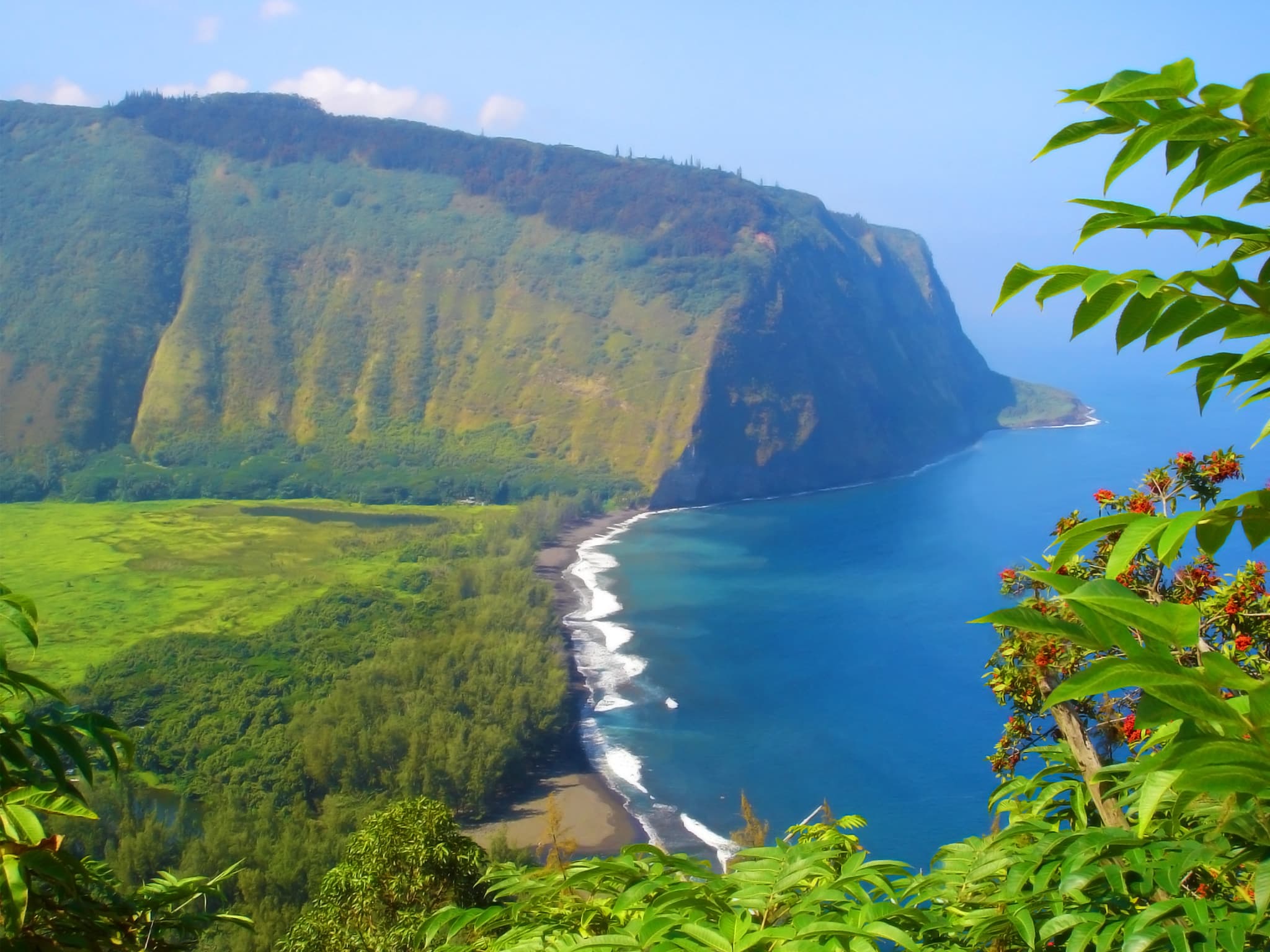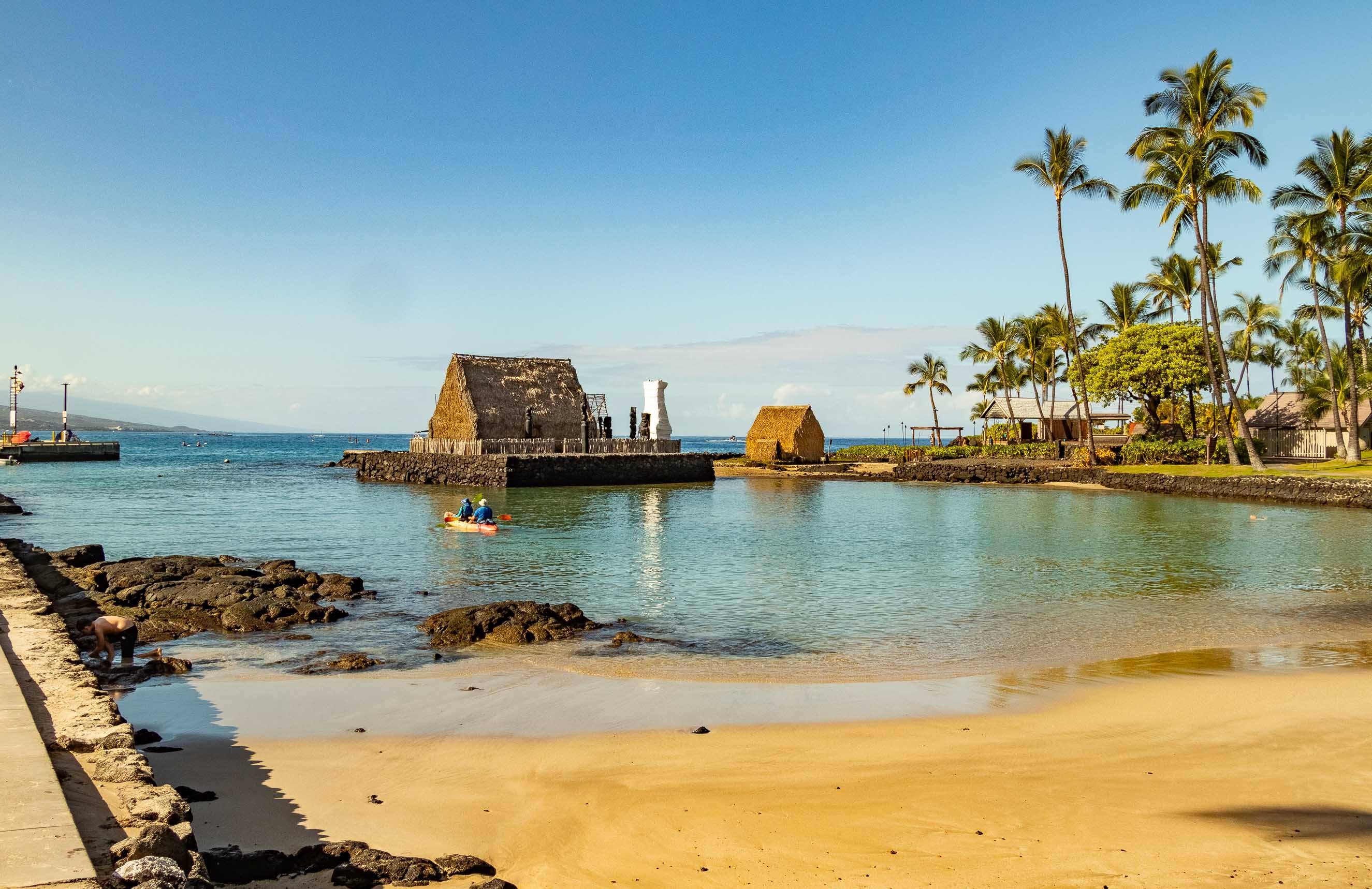Kona Island’s Natural Beauty and Landscape

Kona Island, a jewel of the Hawaiian archipelago, boasts a breathtaking tapestry of natural wonders, from lush rainforests to rugged volcanic slopes and pristine coastal areas. This captivating landscape, sculpted by volcanic forces over millions of years, is a testament to the island’s dynamic and diverse ecosystem.
Diverse Ecosystems, Kona island
The island’s varied terrain supports a remarkable array of ecosystems. The windward slopes receive ample rainfall, nurturing vibrant rainforests teeming with life. These verdant forests are home to endemic species, including the endangered Hawaiian hawk and the rare ʻōhiʻa lehua tree. The leeward slopes, sheltered from the trade winds, are drier and support unique dry forests, characterized by drought-tolerant plants and a diverse bird population. Coastal areas offer a contrasting environment, with sandy beaches, coral reefs, and rocky shores teeming with marine life.
Volcanic Origins and Lava Flows
Kona Island’s dramatic landscape is a direct result of its volcanic origins. The island is formed by five shield volcanoes, the youngest of which, Mauna Loa, is the world’s largest active volcano. Lava flows from these volcanoes have shaped the island’s terrain, creating vast plains, steep slopes, and dramatic cliffs. The volcanic soil, rich in minerals, supports a unique and diverse flora and fauna.
Conservation Efforts
Preserving Kona Island’s natural beauty is a paramount concern. The island faces environmental challenges such as invasive species, habitat loss, and climate change. Conservation efforts focus on protecting endangered species, restoring degraded habitats, and promoting sustainable tourism practices. These efforts aim to ensure that future generations can experience the island’s unique natural heritage.
Kona Island’s Culture and History

Kona Island’s rich culture and history are deeply intertwined with its stunning natural beauty. From the ancient traditions of the indigenous Hawaiians to the arrival of European settlers and the rise of coffee cultivation, Kona’s story is one of resilience, adaptation, and enduring cultural practices.
Indigenous Hawaiian Heritage
The indigenous Hawaiian people, known as the Kanaka Maoli, have inhabited Kona Island for centuries. Their arrival in the Hawaiian archipelago is believed to have occurred between 1,500 and 1,000 years ago, originating from Polynesia. The Kanaka Maoli developed a sophisticated system of agriculture, social structures, and religious beliefs that were deeply connected to the natural world. They cultivated taro, sweet potatoes, and other crops using traditional methods, and their reverence for the land and its resources was reflected in their cultural practices and beliefs.
Arrival of European Settlers
The arrival of European settlers in the late 18th century marked a significant turning point in Kona’s history. Captain James Cook, a British explorer, landed on the island in 1778, and his arrival opened the door for European influence. The introduction of Western culture, including new agricultural techniques and technologies, had a profound impact on the island’s economy and social structure. However, the arrival of Europeans also brought disease and conflict, leading to a decline in the indigenous Hawaiian population.
The Role of Coffee Cultivation
Coffee cultivation played a pivotal role in shaping Kona Island’s economy and culture. Introduced in the 19th century, coffee quickly became a major agricultural export, providing a source of income for many residents. The rich volcanic soil and ideal climate of Kona’s slopes created perfect conditions for growing high-quality coffee beans. The cultivation of coffee fostered a sense of community and economic prosperity, and it continues to be a significant part of Kona’s identity today.
Traditional Hawaiian Practices and Cultural Events
Despite the changes brought about by European influence, traditional Hawaiian practices and cultural events continue to thrive on Kona Island. Hula dancing, a form of storytelling through movement and music, is a beloved tradition that is passed down through generations. Hula performances are often accompanied by chants and the sounds of traditional instruments, such as the ukulele and the ipu (gourd). Storytelling, another important aspect of Hawaiian culture, is used to preserve the island’s history, mythology, and traditions.
Kona Island’s Attractions and Activities

Kona Island offers a diverse range of attractions and activities that cater to every interest, from exploring its stunning natural beauty to immersing yourself in its rich culture and history. Whether you’re seeking relaxation on pristine beaches, adventure in the depths of the ocean, or cultural immersion in traditional Hawaiian practices, Kona Island has something for everyone.
Popular Attractions
Kona Island boasts an array of popular attractions, each offering unique experiences and insights into the island’s diverse landscape and heritage.
- Kealakekua Bay: This historic bay is renowned for its crystal-clear waters, perfect for snorkeling, diving, and kayaking. It’s also the site of Captain Cook’s first landing in Hawaii in 1778, making it a significant historical landmark.
- Pu’uhonua o Honaunau National Historical Park: This park preserves a traditional Hawaiian place of refuge, offering a glimpse into the ancient Hawaiian culture and its values. Visitors can explore the ancient temples, fishponds, and petroglyphs, learning about the history and significance of this sacred site.
- Hawaii Volcanoes National Park: While not directly on Kona Island, this park is a short drive away and offers an awe-inspiring experience. Witness the power of nature as you explore active volcanoes, lava flows, and volcanic craters.
- Keauhou Shopping Center: This open-air shopping center offers a mix of boutiques, restaurants, and art galleries, showcasing local crafts and souvenirs. It’s a great place to find unique gifts and experience the island’s vibrant culture.
- Manta Ray Night Dive: This unique experience allows visitors to witness the graceful dance of manta rays under the moonlight. Guided tours take you to specific locations where these gentle giants congregate, creating an unforgettable underwater spectacle.
Weekend Trip Itinerary
A weekend trip to Kona Island can be filled with exciting activities and memorable experiences. Here’s a suggested itinerary:
- Day 1: Arrive at Kona International Airport (KOA) and check into your accommodation. Spend the afternoon relaxing on the beach at Hapuna Beach State Recreation Area, known for its white sand and calm waters. In the evening, enjoy a sunset cruise along the Kona coast, taking in the breathtaking views of the coastline and the Pacific Ocean.
- Day 2: Start your day with a snorkeling or diving trip in Kealakekua Bay. Explore the vibrant coral reefs and diverse marine life, including colorful fish, sea turtles, and even the occasional manta ray. In the afternoon, visit the Pu’uhonua o Honaunau National Historical Park to learn about ancient Hawaiian culture and history.
- Day 3: Embark on a day trip to Hawaii Volcanoes National Park. Witness the awe-inspiring power of nature as you explore active volcanoes, lava flows, and volcanic craters. In the evening, indulge in a traditional Hawaiian luau, enjoying delicious food, music, and cultural performances.
Activities on Kona Island
Kona Island offers a wide array of activities to suit every interest and adventure level.
- Snorkeling and Diving: Kona Island’s crystal-clear waters teem with marine life, making it a paradise for snorkeling and diving. Explore vibrant coral reefs, encounter playful sea turtles, and witness the graceful dance of manta rays.
- Hiking: Hike through lush rainforests, volcanic landscapes, and coastal trails, enjoying stunning views and discovering hidden waterfalls. Popular hiking trails include the Kealakekua Bay Trail and the Mauna Kea Access Road.
- Cultural Tours: Immerse yourself in Hawaiian culture by taking a guided tour of historical sites, traditional villages, and cultural centers. Learn about the island’s history, traditions, and the significance of its sacred places.
- Coffee Tours: Kona is renowned for its world-class coffee. Visit local coffee plantations to learn about the coffee-growing process, from bean to cup, and enjoy a tasting session of different varieties.
- Whale Watching: During the winter months, Kona Island is a prime destination for whale watching. Witness the majestic humpback whales breaching and playing in the waters off the coast.
- Golfing: Kona Island boasts several championship golf courses offering stunning ocean views and challenging play.
- Shopping: Explore the charming boutiques and shops in Kailua-Kona, finding unique souvenirs, local crafts, and Hawaiian-inspired apparel.
- Dining: Indulge in the island’s culinary scene, sampling fresh seafood, local produce, and Hawaiian fusion cuisine.
Kona Island, with its stunning volcanic landscapes and rich history, offers a unique Hawaiian experience. Whether you’re seeking relaxation on pristine beaches or exploring the vibrant culture, Kona Island has something for everyone. To reach this paradise, consider flying with alaska airlines maui , a reliable and comfortable option that will smoothly transport you to the heart of the island.
Once you arrive, you’ll be captivated by the island’s natural beauty and the warm hospitality of the local people.
Kona Island, a place of volcanic beauty, offers a unique blend of natural wonders and cultural experiences. From the vibrant coffee plantations to the breathtaking coastline, Kona Island captivates visitors with its diverse landscape. To truly appreciate the essence of this paradise, a journey to kona island is essential.
There, you can immerse yourself in the rich history and traditions that have shaped this special place, while enjoying the tranquility of its natural surroundings.
